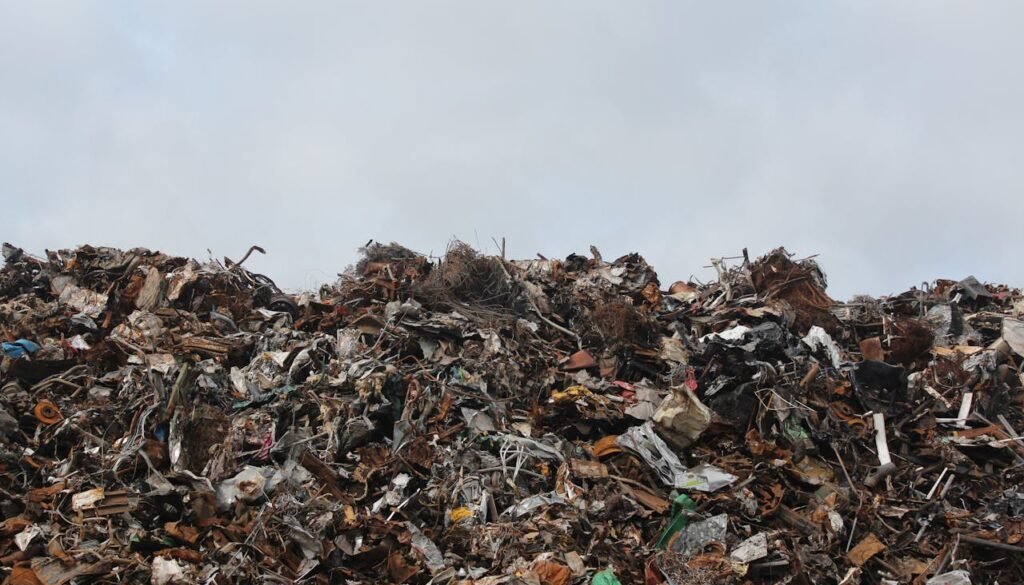How To Reduce Electronic Waste In The Workplace
Here’s a shocking fact: only 17.4% of global electronic waste is properly recycled. That’s it! The rest? It’s sitting in landfills, leaking harmful chemicals into the soil and water, or just collecting dust in some corner of an office storeroom. After walking into our office supply closet one day and seeing the graveyard of outdated monitors, tangled cords, and keyboards. I began to think about how I could reduce electronic waste.
But what could we do? Well, it turns out there’s plenty we can do to reduce electronic waste! Reducing it waste isn’t just about recycling; it’s about rethinking how we use tech in the first place. In this guide, I’ll share what worked for us, where we stumbled, and how you can make your office greener too. Whether you’re a manager, tech lead, or just someone who cares about sustainability, these tips can help you reduce electronic waste in the workplace.
What is Electronic Waste and Why is it a Problem?
Electronic waste, or e-waste, refers to discarded electronic devices like computers, smartphones, and printers. These items often contain hazardous materials such as lead, mercury, and cadmium, which can leach into the environment if not properly disposed of. The environmental impact is significant, contributing to soil and water contamination and posing health risks to humans and wildlife.
In the workplace, rapid technological advancements lead to frequent equipment upgrades, resulting in substantial e-waste generation. Improper disposal of this waste exacerbates environmental degradation. Understanding the gravity of e-waste is the first step toward implementing effective reduction strategies.
Related Article: Cleaning Up Electronic Waste (E-Waste) | US EPA
Conducting an E-Waste Audit in Your Office
An e-waste audit helps identify the types and quantities of electronic waste your office produces. The first step in the process to reduce electronic waste is to begin by cataloging all electronic devices, noting their condition and usage status. This process reveals obsolete or underutilized equipment that can be earmarked for recycling or repurposing.
Engaging employees in the audit fosters a culture of sustainability. Assign teams to different departments to ensure a thorough assessment. Documenting findings in a centralized database aids in tracking progress and identifying areas for improvement.
Related Article: Facts and Figures on E Waste and Recycling
Strategies to Reduce Electronic Waste in the Workplace
Implementing a “repair before replace” policy can significantly extend the lifespan of electronic devices. Encourage employees to report malfunctioning equipment promptly for repairs. Regular maintenance schedules also help in early detection of potential issues.
When purchasing new equipment, opt for energy-efficient models with eco-friendly certifications. Eco-Friendly lighting options that consume less power and last for longer are great options. Consider vendors that offer take-back or recycling programs. Leasing equipment is another strategy, as it often includes end-of-life management by the provider.
Related Article: E-Waste: Australia’s Hidden ESG Nightmare
Encouraging Recycling and Responsible Disposal
Establish designated e-waste recycling stations within the office to make disposal convenient for employees. Partner with certified e-waste recyclers who adhere to environmental regulations. Regularly schedule e-waste collection drives to prevent accumulation.
Educate employees about the importance of proper e-waste disposal through workshops and informational materials. Highlight the environmental and health impacts of improper e-waste handling to foster responsible behavior.
Related Article: Electronics Donation and Recycling | US EPA
Promoting Reuse and Donation of Electronics
Before discarding functional equipment, consider donating it to schools, non-profits, or community centers. This not only helps to reduce electronic waste but also supports organizations in need. Ensure that all data is securely wiped from devices before donation to protect sensitive information.
Implement an internal program where employees can repurpose or purchase old equipment at a reduced cost. This gives devices a second life and minimizes waste.
Related Article: Basic Information about Electronics Stewardship | US EPA
Creating a Sustainable Office Environment
Beyond managing e-waste, fostering a sustainable office involves adopting practices that reduce overall environmental impact. Implement energy-saving measures like using LED lighting and programmable thermostats. Encourage double-sided printing and digital document sharing to minimize paper use.
Promote the use of reusable kitchenware to reduce single-use plastics. Encourage employees to adopt sustainable commuting options like biking, carpooling, or public transportation. Creating a green office culture requires commitment from all staff members.
Related Articles from SustainablyTech.com:
- Creating a Sustainable Office Setup: A Step-by-Step Guide
- Top 10 Sustainable Tech Gadgets of 2024
- How to Choose Sustainable Tech Products
Wrapping It All Up: Your Path to a Greener Workplace
Reducing electronic waste in the workplace requires a concerted effort from all employees. By understanding the impact of e-waste, conducting regular audits, implementing reduction strategies, and promoting recycling and reuse, your office can contribute significantly to environmental sustainability. Encourage your team to adopt these practices and share their own tips for minimizing e-waste. Take a look at my article on What Are Zero Waste Office Supplies for more tips on reducing your workplace’s eco-impact.



